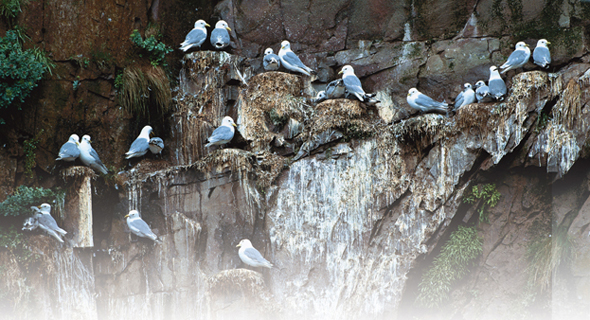
FIGURE 27–14 Other Nitrogenous Compounds Large and/or terrestrial animals either convert ammonia to uric acid and excrete it as sticky white guano, as have these gulls, or they convert ammonia into urea and release it, diluted, as urine.
Maintaining Water Balance Getting rid of any type of nitrogenous waste involves water. For that reason, excretory systems are extremely important in maintaining the proper balance of water in blood and body tissues. In some cases, excretory systems eliminate excess water along with nitrogenous wastes. In other cases, excretory systems must eliminate nitrogenous wastes while conserving water. Many animals use kidneys to separate wastes and excess water from blood. This waste and water forms a fluid called urine.
Kidneys perform these functions despite a serious limitation: No living cell can actively pump water across a membrane. Yet kidneys need to separate water from waste products. You may recall that cells can pump ions across their membranes. Kidney cells pump ions from salt to create osmotic gradients. Water then “follows” those ions passively by osmosis. This process works well but leaves kidneys with one weakness: They usually cannot excrete excess salt.
 In Your Notebook Explain how kidneys remove excess water from the blood.
In Your Notebook Explain how kidneys remove excess water from the blood.
MYSTERY CLUE

Humans, like most land-dwelling mammals, have evolved kidneys that are designed to conserve salt, not to get rid of it. How could this have posed a problem for the sick “survivor”?
Excretion in Aquatic Animals
 How do aquatic animals eliminate wastes?
How do aquatic animals eliminate wastes?
Aquatic animals have an advantage in getting rid of nitrogenous wastes because they are surrounded by water.  In general, aquatic animals can allow ammonia to diffuse out of their bodies into surrounding water, which dilutes the ammonia and carries it away. But aquatic animals still face excretory challenges. Many need to either eliminate water from their bodies or to conserve it, depending on whether they live in fresh or salt water. The excretion issues of aquatic animals are summarized in Figure 27–15 on the next page.
In general, aquatic animals can allow ammonia to diffuse out of their bodies into surrounding water, which dilutes the ammonia and carries it away. But aquatic animals still face excretory challenges. Many need to either eliminate water from their bodies or to conserve it, depending on whether they live in fresh or salt water. The excretion issues of aquatic animals are summarized in Figure 27–15 on the next page.
Table of Contents
- Formulas and Equations
- Applying Formulas and Equations
- Mean, Median, and Mode
- Estimation
- Using Measurements in Calculations
- Effects of Measurement Errors
- Accuracy
- Precision
- Comparing Accuracy and Precision
- Significant Figures
- Calculating With Significant Figures
- Scientific Notation
- Calculating With Scientific Notation
- Dimensional Analysis
- Applying Dimensional Analysis




